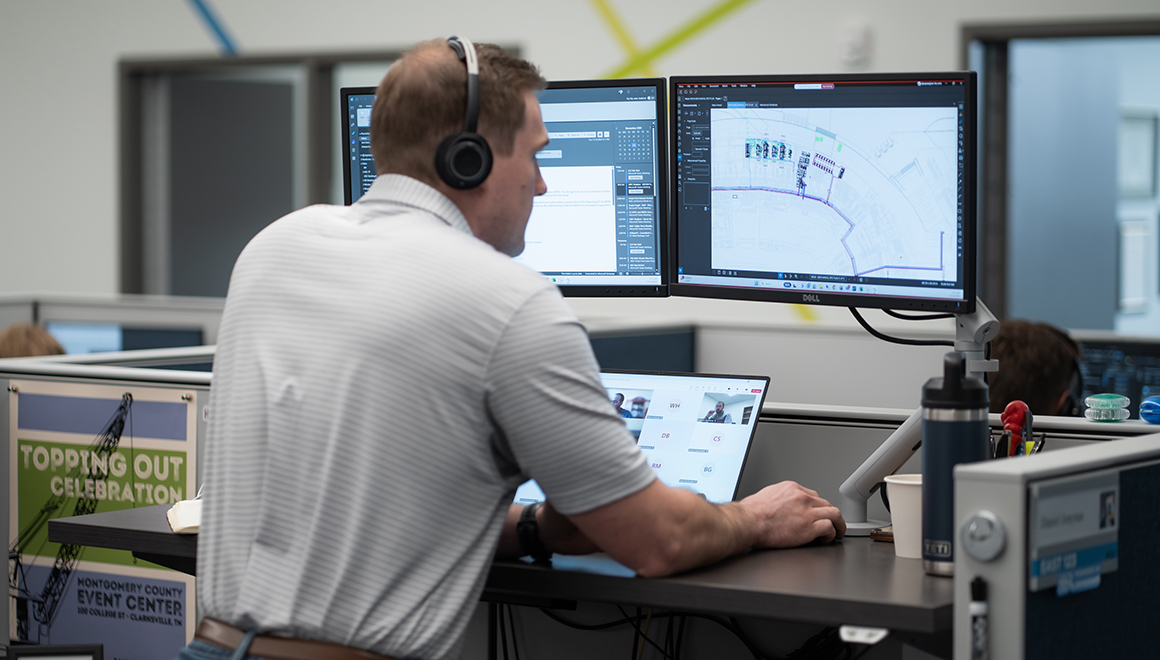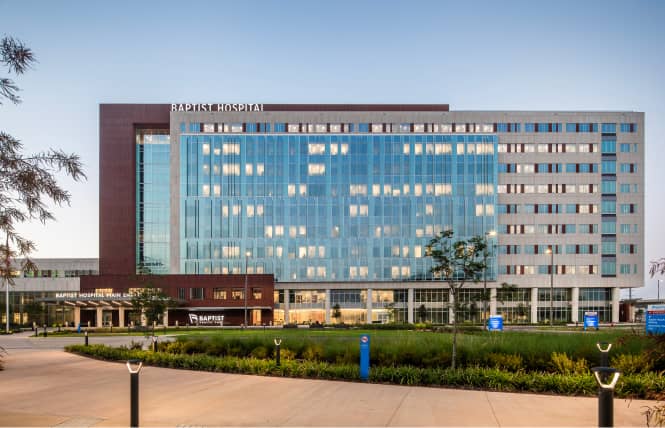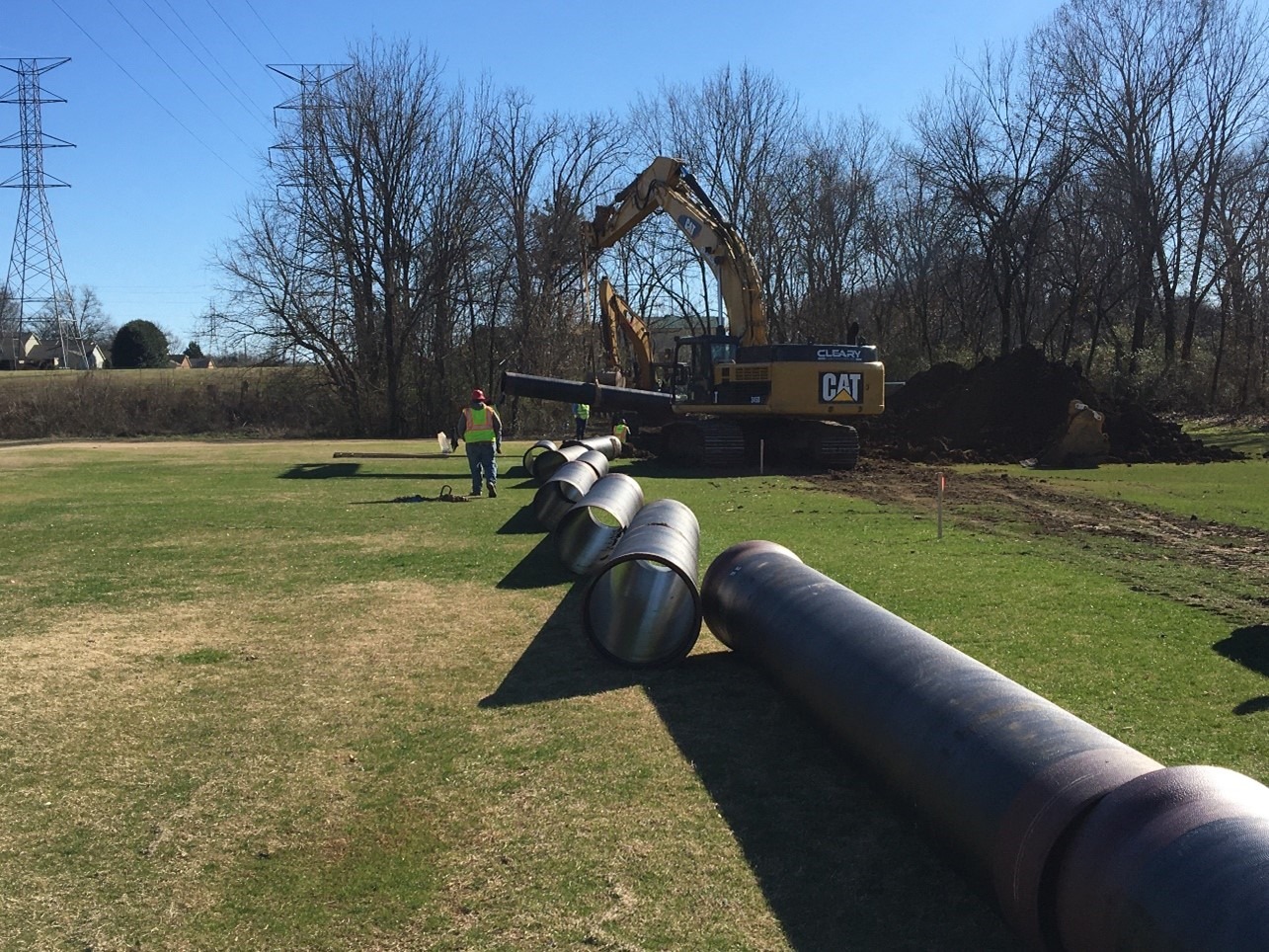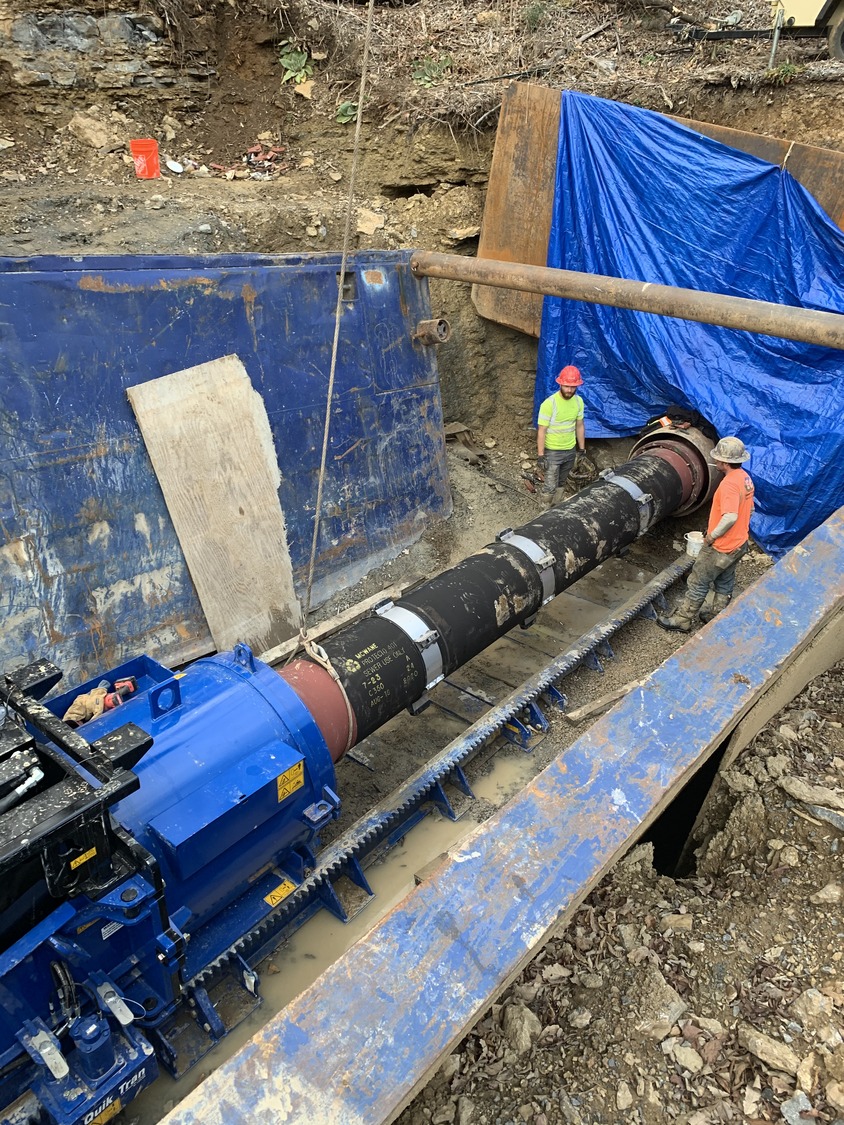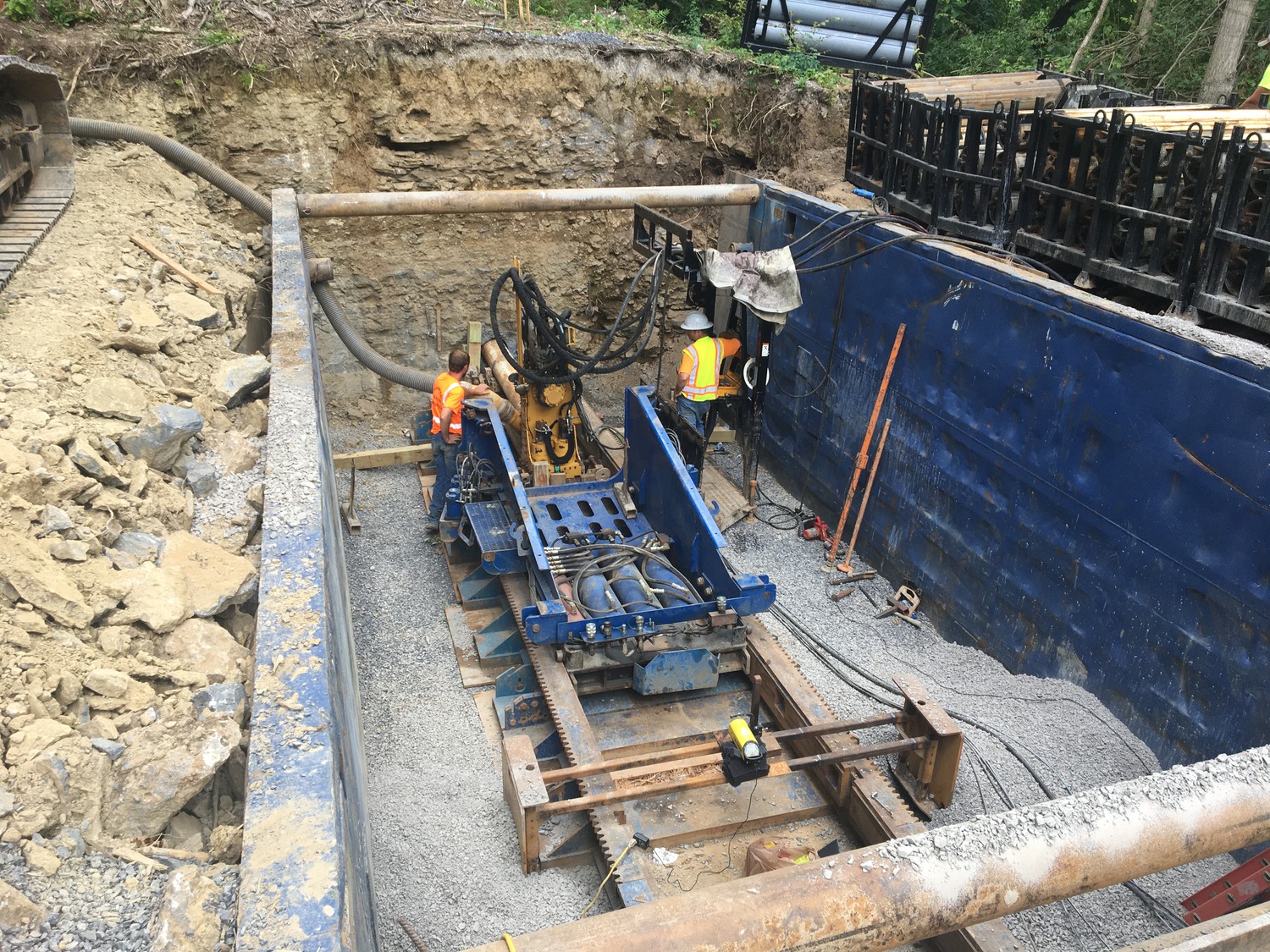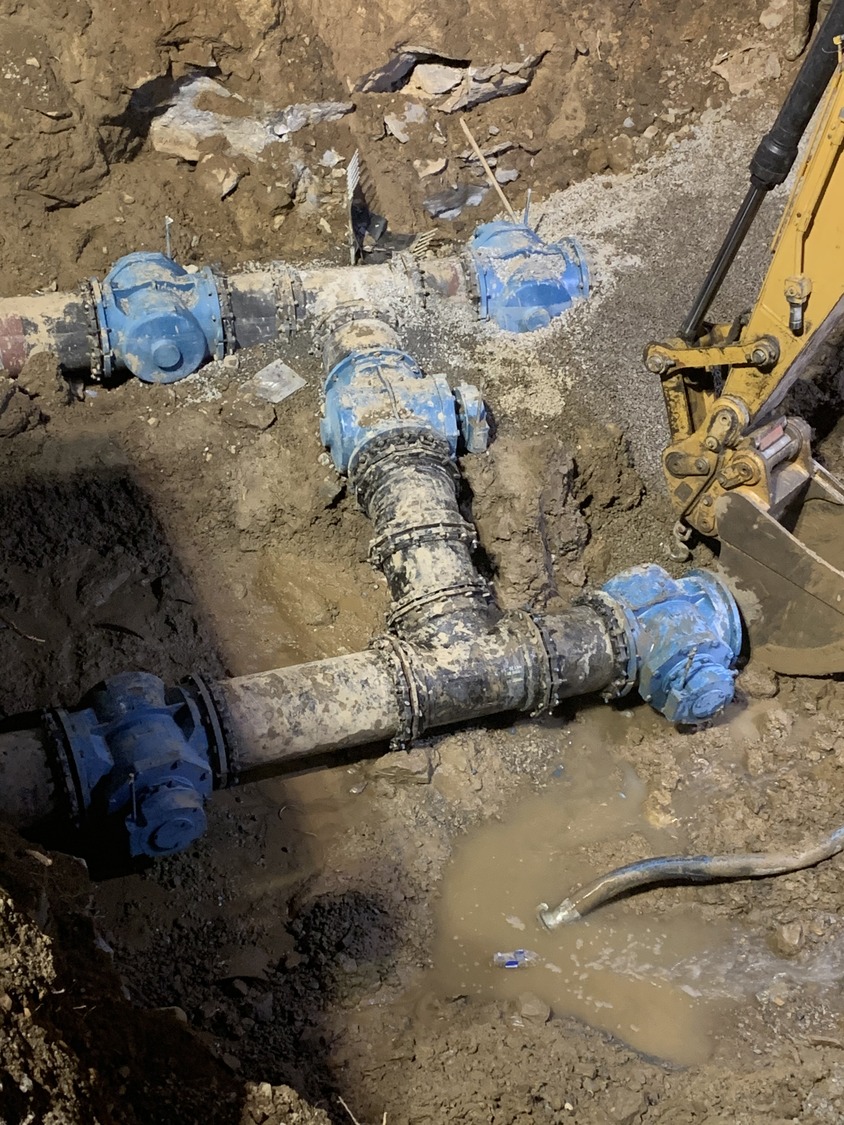Connected to one of the largest pump stations within the Harpeth Valley Utilities District (HVUD) network, the new force main increases flexibility during wet weather events.
Thanks to our longstanding relationship with Harpeth Valley Utilities District (HVUD), we approached this project as a partnership with the owner and the contractor, Cleary Construction. To convey sewer water during wet weather events, HVUD needed a new force main in West Nashville to connect the existing Flat Creek pump station to the Overall Creek Interceptor, a project that HVUD and SSR completed together 15 years prior. The final project resulted in more than 1.7 million pounds of steel and 16,000 tons of stone in the ground. With a project of this magnitude and difficulty, several challenges were identified early in the project. Through close collaboration with HVUD and project stakeholders, our team ensured the project was completed under budget.
We conducted a routing study of potential options and led a series of brainstorming meetings with HVUD to analyze hydraulic scenarios during the initial design phase and determine the final corridor. It was decided to install 16,000 linear feet (3 miles) of 24” force main. Once the preliminary alignment was set, HVUD and SSR partnered to secure Cleary Construction as a contractor using the Construction Manager at Risk delivery method, which engaged the contractor early in the project to yield a faster and more coordinated construction cost and timeline. Cleary Construction was responsible for traffic control and full pavement restoration along the local residential road.
The final 24” force main starts at the owner’s existing pump station which is located near the juncture of a major local river and one of its largest tributaries. The line quickly manifolds into the existing 18” force main for increased hydraulic flexibility before crossing the large tributary. The force main then continues across state owned property operated by a local sports league to connect to an existing 12” force main before it bores 540 LF underneath a local road and Interstate to a termination point outside of State Right Of Way into the parking lot of a commercial business. The line was then bored 160 LF under a state highway before leading into a 7,500 LF path along a residential roadway.
Our close relationship with HVUD was critical in overcoming project challenges, which included design and construction of three separate 36” steel casing tunnels, totaling 1400 linear feet under Interstate 40, Highway 70 South and TDOT right-of-way (at depths up to approximately 95 feet deep). We faced alignment issues by tunnel subcontractors which led to extensive layout corrections, not only using office calculations, but also by directing field survey measurements to readjust these alignments and correct their final location.
Other challenges to a project of this magnitude were the acquisition of easements and permitting, which in this case included coordination with the Tennessee Department of Transportation, Tennessee Department of Environmental Conservation, Metro Nashville Public Works, Tennessee Valley Authority, and the U.S. Army Corp of Engineers, among others. Coordination and approval by these entities was of high importance, as a failure to identify and execute these permits could result in project delays, untimely change orders and in some cases, project termination.
Through our history with HVUD and our extensive experience in the design and installation of large diameter pipes, the project was completed under budget despite its challenges and size.
